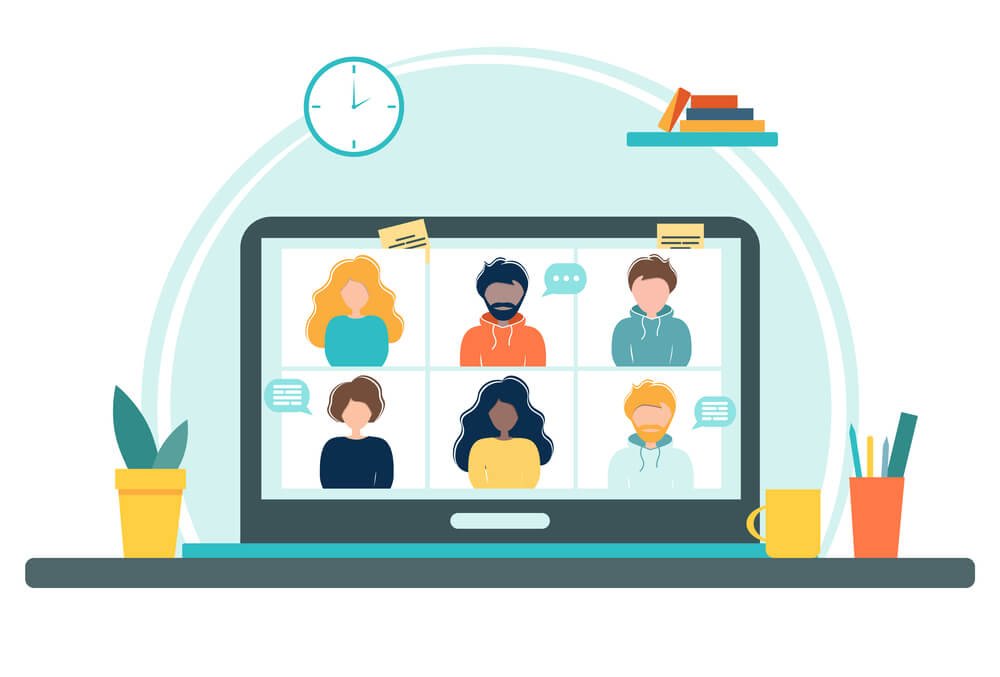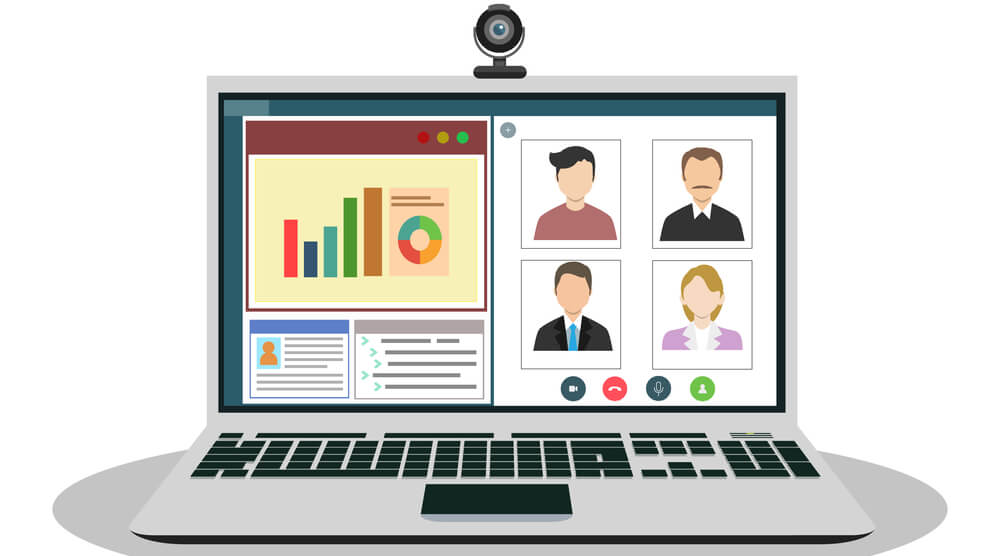Nearly everyone who has recently transitioned into working from home is now having regular meetings online. Even in this new context, it’s essential to keep meetings as efficient as possible — and adapting good in-person meeting manners to the online format can actually help with that. Now that we have quite a few of these under our proverbial belts, we put together an online meeting etiquette guide, based on our own experience within the team over the past few months. Read on for our breakdown of tried and tested advice for both audio-video and audio-only meetings.
Some Rules Apply in Both Worlds
Most meeting etiquette guidance is applicable in both the real world and the digital world. Moreover, it’s in the best interest of all participants to observe these courtesies as much as possible.
Be on Time
Punctuality remains important. It may seem useless to state this when we’re around the house all the time anyway, but it is important to be mindful of the temporary context that all participants are navigating — and be open about the challenges of yours — for a fair and inclusive scheduling process. For instance, you’re likely also contributing to the change in e-commerce trends during COVID-19, so be sure to account for things like a delivery ETA when scheduling meetings. Similarly, you may have carved out certain times during the day to dedicate to your children so they aren’t “separated” from an adult for eight hours straight. If so, it’s absolutely fine to be open about this and include it in the collective scheduling process.
Working from home with pets might mean an unforeseen accident on your favorite carpet right before your meeting is about to start. If this or another situation occurs, take a moment to let another attendee know that you’ll be a few minutes late. That way, everyone will be in the loop and you won’t miss anything.
Dress Appropriately
While wearing a three-piece suit while working from home is most likely not required, you’re still expected to dress as though you’re in a professional setting — at least when you’re attending a video meeting. We tend to opt for comfort, and probably even more so now that so we are working from home. However, at the very minimum, don’t look like you just got out of bed or joined the meeting right after an intense workout. Rather, look like you meant to be there. It not only shows that you take your time seriously, but also that you respect everyone else’s time, as well.
No Snacking
Unless participants agreed beforehand to make it a working lunch, resist the urge to snack. This applies to both meetings in physical conference rooms, as well as virtual video or audio-only meetings. You never know when you might be the one who forgets to mute your mic! Note that it is important to stay hydrated, though. So, if you have a lengthy meeting, it’s perfectly acceptable to have your beverage of choice at hand. No slurping, of course.
Say “Hello”
Before you begin, take a headcount and make sure all participants are introduced to each other, if necessary, and that they understand why they were invited. This helps shorten that phase of organizational confusion that tends to set in at the start of group meetings and allows you to move on to the meeting agenda.
Pay Attention
In this new environment, it might not be immediately apparent when your attention unintentionally slips away for a minute. But it will become evident eventually if you weren’t taking mental notes. Unless you’re using your phone as a platform for the meeting itself or to take actual notes — consider clarifying this bit for fellow attendees from the start — set it aside and check it when the meeting has concluded. Mute your phone and disable notifications either way. Likewise, if you’re using a laptop or desktop, mute or turn off notifications there, as well. That is one distraction you can easily prevent.
Whose Turn Is It, Anyway?
Accept that talking over each other is inevitable when each meeting participant is in a different location. This most likely happens because of lags in varying quality of internet connectivity. However, there are a few ways to significantly reduce the frequency of these occurrences:
- Leave a few seconds of silence when moving from one topic to the next or before passing “the floor” to someone else. This will account for streaming lags and allow everyone to catch up, as well as a chance to intervene. Accept that this will slow the usual pace of the meeting somewhat, but know that it does ensure a respectful and efficient meeting experience.
- In a physical meeting room, as well as in a video conference, the simple visual cue of raising your hand is a polite way to ask to intervene at an unscheduled point in the meeting. If video conferencing is not your preference, that is OK too — the aforementioned strategic silences are even more valuable in an audio-only online meeting, giving participants a chance to intervene verbally. Simply state that you have a question or a comment and ask if it’s okay to discuss it then or if it would be preferable to save it for the reserved Q&A portion of the meeting, if there is one.
Announce Your Environment
Ideally, we’d each have a perfectly quiet, excellently lit and dedicated work space at home. Realistically, despite your best efforts to insulate yourself for an online meeting, some things are beyond your control. For example, microphones are likely to pick up on things like construction noise outside your window; neighbors trying out a new karaoke machine; your pets or children playing outside your closed door; or even someone else in the home having a meeting or being on a call at the same time — just to name a few real-life scenarios.
With that in mind, let your fellow participants know upfront that there may be some noise in your background. This will not only save you some awkwardness and manage their expectations of the meeting environment, but it will also make any unexpected noises less of a distraction if the possibility has already been discussed and accepted.
Mute Yourself
If you’ve read this far, you should already have enough examples of why this is a good idea. Always mute your line if you’re not the one talking — even if it’s just a one-on-one meeting — regardless of whether it’s a video meeting or an audio-only conference. This simple, yet essential step will help minimize call noise, avoid audio feedback and keep the meeting focused on the person who’s speaking.
Do Your Homework
Last, but certainly not least, prepare for the meeting ahead of time. If you’re the organizer, provide the necessary information to all attendees, as well as plenty of time for them to review it before the actual meeting begins. Furthermore, consider agreeing upon a meeting format or structure beforehand so everyone knows what is expected at which point in the meeting.
Meanwhile, if you’re an attendee, take time to review the material provided and — depending on the nature of the meeting and its subject — conduct additional research, take notes, and prepare questions and/or constructive feedback. Preparation for online meetings also includes making sure everything works as intended, so make time for hardware and meeting platform testing, as well.











